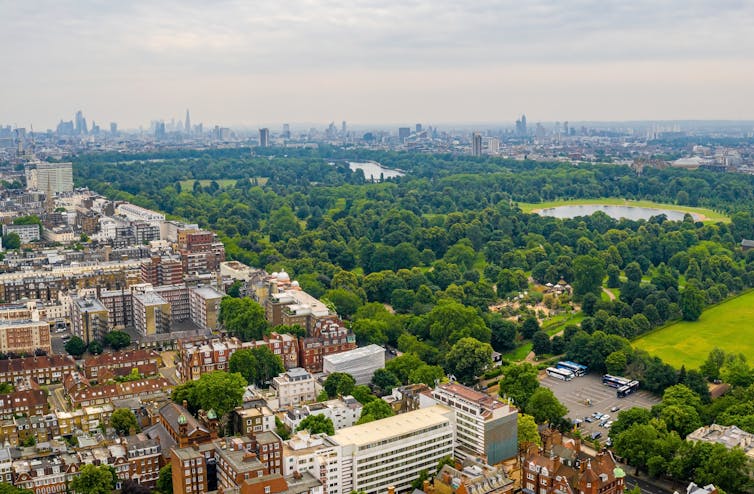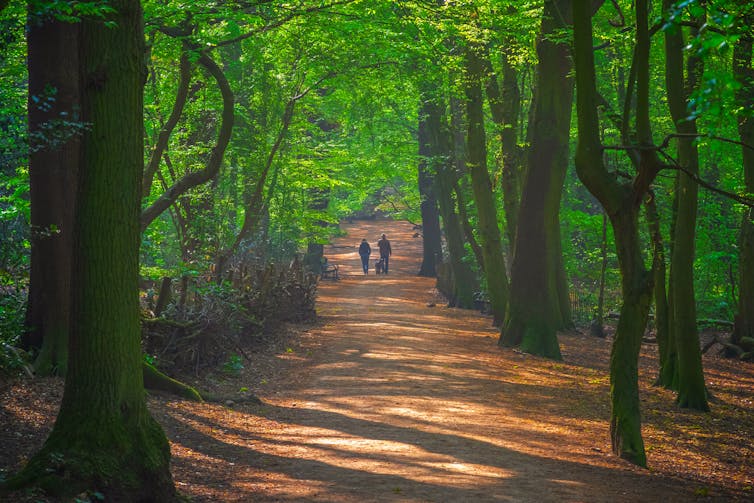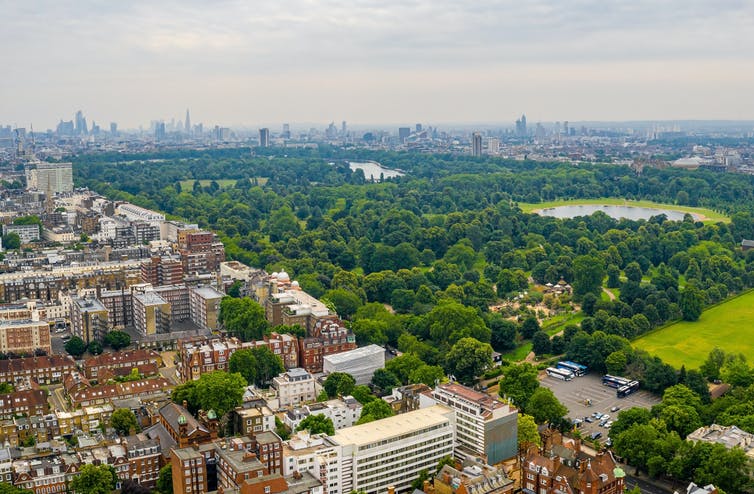
 Shutterstock.
Shutterstock.
Edward Truch, Lancaster University
London has been officially designated the world’s first national park city, with a week-long festival of free outdoor events and a ceremony at City Hall to mark the occasion. What started as a grassroots movement, with support from hundreds of local community groups and experts in and around London, has inspired authorities to commit to ensuring that more than half the area of London remains green, that the natural environment is protected and that all residents have access to nature.
During the ceremony, London Mayor Sadiq Khan recalled how he took a break from his intensive mayoral election campaign in 2016 to walk along the banks of the River Wandle in south London with Daniel Raven-Ellison, self-styled “guerrilla geographer” and journalist with the National Geographic, who expounded on his vision of creating a national park city – a vision shared by community development and conservation groups around London. Khan was so taken by the idea that he incorporated it in his successful election manifesto.
Read more:
London wants to become a ‘national park city’ – is that a contradiction in terms?
Some have questioned whether a city can really resemble a national park, while others have opposed the idea altogether, suggesting that it will detract from the special status of national parks. But as an academic interested in the governance of national and urban parks, as well as an adviser to the National Park City Foundation, I feel that the values of a national park can be translated into an urban context, benefiting local people, as well as the environment.
A world first
The world’s first national park – Yellowstone National Park – was established in the US in 1872 as a “public park or pleasuring-ground for the benefit and enjoyment of the people”. The UK lagged behind somewhat, but by 1951 its first ten national parks had been designated as protected areas, following a lengthy campaign to preserve the natural beauty of the countryside and provide recreational opportunities for the public.
Today, national parks are still treasured assets – though austerity and inequality prevent many from enjoying them. Yet with more and more people moving to cities, there are clear benefits for urban communities to embrace the values of national parks, and to experience and preserve natural landscapes. Creating national park cities – in addition to traditional national parks – is one way to do this.
Alison Barnes, chief executive of the New Forest National Park and a trustee of the National Park City Foundation, holds that the UK’s national parks serve three purposes: to protect nature and cultural heritage, to help people enjoy and understand it, and to underpin the prosperity of communities.
Barnes thinks all this can be done in an urban setting as well. As she told me during an interview at the opening ceremony: “the national park city movement is … not undermining the protected landscapes that we have today – we need something on top of that to reconnect people with what national parks are all about.”
A city-wide strategy
As well as helping residents to reconnect with nature to benefit their health and well-being, authorities are turning London into a national park city as part of a city-wide environmental strategy, aimed at tackling urgent issues such as social exclusion, air quality and climate change.
 A couple wander through Highgate Wood. Shutterstock.
A couple wander through Highgate Wood. Shutterstock.The strategy outlines how London’s network of parks, green spaces, gardens, woodlands, rivers and wetlands will be planned, protected and managed to benefit all Londoners. It aims for at least half of the city’s area to remain green – currently, around 47% is, with “urban forests” such as Hampstead Heath and Highgate cemetery absorbing significant amounts of carbon dioxide.
Read more:
Urban ‘forests’ can store almost as much carbon as tropical rainforests
The National Park City Foundation was created in 2017, to formalise the steering group of the movement, drive the ongoing development of London as a national park city and to inspire other cities around the world to follow suit. Practical steps already taken by the foundation include creating the London National Park City Maker Paper, which highlights examples of local community projects and aims to inspire the creation of many more.
Another practical initiative is the creation of a new London National Park City map, with the support of Ordnance Survey. This should help raise awareness among Londoners of the natural areas close to where they live, and inspire more walking trails and outdoor recreational activities.
In the UK, similar campaigns have been started in Glasgow and Newcastle. Abroad, other cities are watching closely. I listened on as the environment minister for South Australia declared, at the opening ceremony in London, that Adelaide is aiming to follow in London’s footsteps.
The launch of London as a national park city shows how a grassroots campaign with strong leadership can tap into the enormous energy and enthusiasm of citizens to make a difference. When local leaders listen and collaborate with citizens, amazing results can be achieved.![]()
Edward Truch, Professor in Information Systems, Lancaster University
This article is republished from The Conversation under a Creative Commons license. Read the original article.




